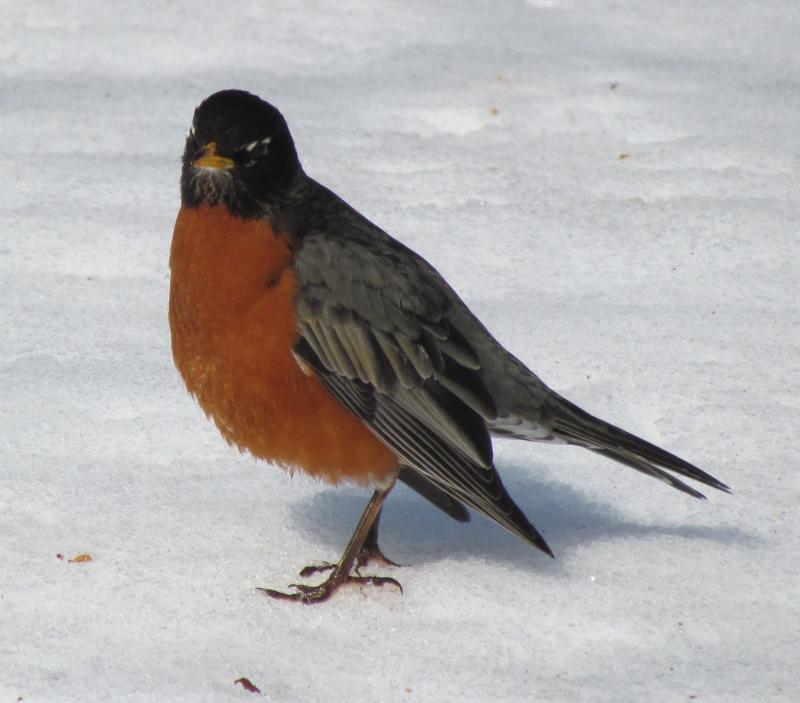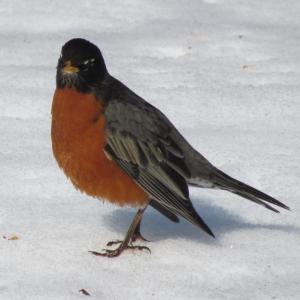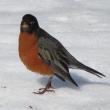The Most Adaptable Bird?
Listening to the caroling songs of American robins echoing around the neighborhood during a lull in the rain showers in the evening as we wrote this column, we started thinking about how adaptable robins are. We’ve seen them in Florida in winter, in suburbs and parks throughout most of the rest of the U.S. and southern Canada, in openings in the Boreal Forest of Canada, and even in the open tundra north of there. In fact, if you open up a field guide and look at a map of their breeding distribution, you will see that they nest over virtually the entirety of Canada and the U.S., and south even into the highlands of southern Mexico.
That makes them an amazingly adaptable bird, at least based on total range size.
But is it the most adaptable bird in North America, or even in Maine, based on size of the breeding range?
To answer that question, we took a peek at a database compiled by the Partners In Flight coalition and maintained by a nonprofit called the Bird Conservancy of the Rockies (formerly Rocky Mountain Bird Observatory). The database includes an estimate of the total area of the breeding range of all the birds of North America.
We did a quick sort and arranged the species from largest breeding distribution to smallest, expecting to find American robin near the top.
Instead, we were shocked to discover that American robin was in 57th place (from the top)!
Fifty-seventh is still high up on the list when you consider that there were over 700 species considered.
But still, why wasn’t it higher on the list?
There were two categories of species that are more globally widespread than American robin. One group is made up of species that have truly global distributions. Some of those are because of human-made introductions and subsequent spreading of the species. That includes the number one species on the list: rock pigeon (the common town pigeon) but also introduced bird species like the now ubiquitous house sparrow and European starling.
Other species occurring naturally have a global distribution, like short-eared owl, barn swallow, cattle egret, mallard, bank swallow, and northern shoveler. Some of these may eventually be split into New World and Old World species, in which case the global range size of each of the sibling species would obviously be much reduced. But for now at least, they are considered all of the same VERY widespread species.
A second category of species more widespread than the American robin are those that occur all the way from North America south to southern South America. This includes species like turkey vulture and black vulture, and perhaps surprisingly to many people, American kestrel and house wren. Among North American species found only in North and South America, the robin is…number 12!
What about some other species that we would have considered among the most widespread? Yellow warbler registers at 72nd, red-winged blackbird at 80th, and chipping sparrow at 85th.
American robins occur only in North America, so they have a much smaller range than species found worldwide or hemisphere-wide, which is why they come in 57th place in the list. So, since they occur only in North America, we decided to compare them to other species ONLY found in North America. How do they measure up? American robin is…number one!
Nevertheless, the robins had stopped singing by the time we finished this column. Hopefully it wasn’t because they were disappointed to have lost the “most adaptable bird in the world” crown to the pigeon.
Jeffrey V. Wells, Ph.D., is a Fellow of the Cornell Lab of Ornithology. Dr. Wells is one of the nation's leading bird experts and conservation biologists and author of “Birder’s Conservation Handbook”. His grandfather, the late John Chase, was a columnist for the Boothbay Register for many years. Allison Childs Wells, formerly of the Cornell Lab of Ornithology, is a senior director at the Natural Resources Council of Maine, a nonprofit membership organization working statewide to protect the nature of Maine. Both are widely published natural history writers and are the authors of the book, “Maine’s Favorite Birds” and “Birds of Aruba, Bonaire, and Curaçao: A Site and Field Guide” from Cornell Press.
Event Date
Address
United States

























